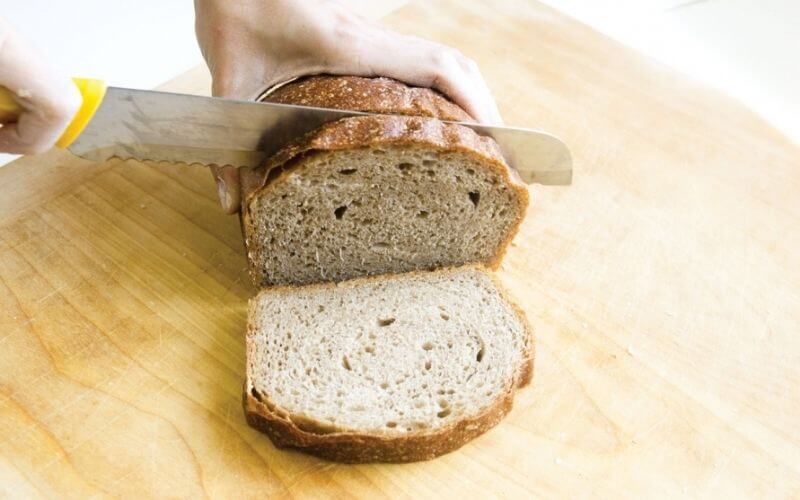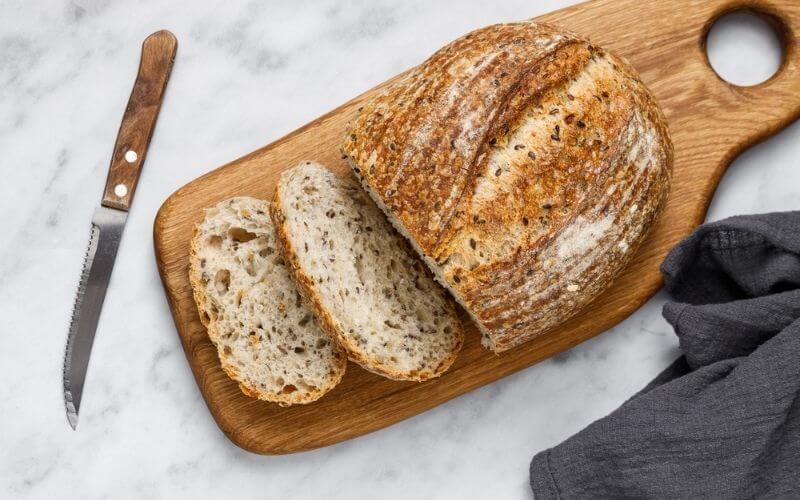Unsure about the optimal way to store your homemade bread? Delve into our comprehensive guide to discover bread storage ideas that will keep your bread soft and fresh for days!
Why Homemade Bread is Superior
Everyone who’s tried their hand at bread-making understands that nothing compares to the fragrance and texture of homemade bread. It’s economical, a perfect foundation for gourmet sandwiches and transforms your breakfast toast into a gastronomic experience. Plus, the act of kneading the dough? An excellent stress-reliever.
However, the question arises – how do you store multiple loaves without compromising quality? Let’s crack the bread storage code!
Understanding Different Bread Types

Before diving into storage methods, it’s crucial to identify the types of bread you’ve baked. The ingredients and preparation can influence the ideal storage method.
Yeasted Bread:

Yeasted breads are perhaps the most common kinds of bread out there. These breads can be kneaded or no-knead, depending on how much time and energy. This kind of bread gets its rise from the yeast and requires resting time for the dough which allows the yeast to multiply.
It also relies on fermentation, which gives the bread its tiny holes once it is baked. As a result, yeasted breads are light and airy with looser crumbs. White or whole-wheat sandwich bread, ciabatta, Challah, Ciabatta, and even pizza dough are some examples of commonly consumed yeasted breads.
Non-Yeasted Bread:

This sort of bread has no yeast and gets its rise from ingredients like baking soda or baking powder. They have a much lower rise than yeasted breads and are denser and thicker. Irish soda bread, ‘emergency’ bread, and certain rustic breads have no yeast in them.
Moreover, flatbreads like pita, parathas, and rotis don’t have any rise at all as they have no yeast and are rolled out to thin round sheets. Banana and fruit bread are also examples of non-yeasted bread.
Sourdough Bread:

Sourdough bread is a slow-fermented bread made from a sourdough starter. This is a mixture of flour and water and is a live culture with lactic acid bacteria.
This culture ferments and gives the bread its rise, instead of yeast. Sourdough pieces of bread are known for their tangy taste and are seen as a healthier kind of bread as it is easy to digest.
How to Store Homemade Bread
Storage is the key to extending the life of your homemade bread. Explore the techniques suitable for different bread types below.
Storing Yeasted Bread:
Here are some ways to store bread that get their rise from using yeast as a leavener.
- At Room Temperature:
- For crusty whole loaves: Store unwrapped. No need for specialized containers; a box will suffice.
- Sliced bread: Store in paper or plastic bags.
- Soft-crust loaves: An airtight plastic bag or wrapped in foil/plastic is ideal.
- In the Fridge:
- Store using the above methods. Note: prolonged fridge storage may lead to drying and mold formation.
- In the Freezer:
- Freezing retains the bread’s freshness for weeks. Wrap in plastic or foil, then in a self-sealing bag. Use within 6-8 weeks for optimal taste and softness.
Storing Non-Yeasted Bread:
- At Room Temperature:
- Store unwrapped in sealed bread boxes to retain softness for a couple of days.
- In the Fridge:
- Store pita and similar breads in bread bags. However, refrain from refrigerating moist breads like banana bread.
- In the Freezer:
- Wrap the bread (or individual slices) in cling film or plastic wrap. Place in freezer bags and stack.
Preserving Freshly Baked Bread
- Allow the bread to cool completely post-baking.
- Store unwrapped in a breadbox, ensuring it’s located in a cool, dry place.
- For slicing, cut from the center to maintain moisture.
Reviving Stale or Old Bread
Don’t discard that stale bread just yet! Here are some ingenious ways to revive and repurpose it:
- Toast with herbed compound butter.
- Use in French toast, bread puddings, or as breadcrumbs.
- Transform into croutons, stuffing, or thickeners for soups.
- And for pet lovers, consider offering them as treats for your dog!
Frequently Asked Questions
Below you’ll find answers to questions we get asked the most about storing homemade bread.
01. What is the Best Place to Store Bread in the Kitchen?
You can store your bread in a box on the counter, in your pantry or kitchen cupboard, or any cool spot in a breadbox. For longer-term storage, keep your bread wrapped in plastic in the fridge or freezer.
02. How Long Does Homemade Sourdough Bread Last?
When kept at room temperature, sourdough breads stay soft and fresh for 4-5 days, depending on the temperature. You can also freeze your bread for around 6 weeks safely.
03. How Long Does Homemade Bread Stay Good for?
Homemade bread stays fresh for 3-4 days outside on the counter or in a cupboard. When kept in the fridge, your bread will stay good for an extra 3-5 days. To keep your bread fresh for even longer, keep it in the freezer.
04. How to Slice Homemade Bread to Prevent Tearing or Breaking?
Wait for the bread to cool completely and use a bread knife in a sawing motion (back and forth) to cut slices from a loaf of bread.
05. What is the Best Place to Store Homemade Bread to Prevent Drying?
If you plan on eating your bread over the next few days, it is best to store it at room temperature in a box or large and secure container. If you need to store it for more than 5 days, wrap it tightly in foil or plastic wrap, put it in some kind of secure bag, and keep it in the freezer.
06. How Do I Store Homemade Bread Without Plastic?
If you have some kind of bread that needs air circulation, don’t store it in plastic bags. Instead, use something like a cloth bag or wrap it in an old soft tea towel.
You can even use a clean pillowcase that you aren’t using. Then, place it in a casserole dish with a lid or Dutch oven and store it in the kitchen.
Final Thoughts
Baking your own bread is a great hobby, as it is calming and gives you fresh amazing-tasting bread. Homemade bread is also free from preservatives, which makes it a healthier choice. Once you know how to store homemade bread, you will have a supply of homemade bread forever.
Baked way too much bread? Wrap it up and toss it in the freezer and keep yourself fed for the next couple of weeks!






